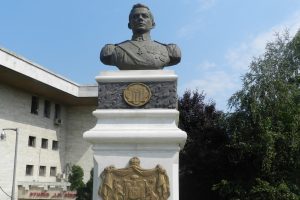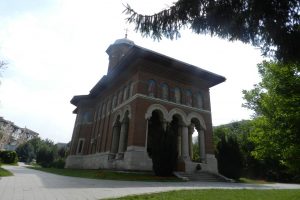

The high school was named after three landowners, the Buzești brothers Preda, Radu and Stroe Buzescu, who were the most inseparable and strongest military supporters of King Mihai Viteazul. Their noble blood came from 1461. Between 1590 and 1600 bravely fought bravely, several times, in the Christian army of King Mihai Viteazul against the Turkish people. It was officially founded as a high school in 1882 as “Real secondary school” through an edict of the “Ministry of Cults” (approved by ministry PS Aurelian of the Ministry of Cultural in Romania, at the time), with a teaching science mostly for boys. The school motto is formed from two Latin words from the beginning of the book of Genesis: “Fiat Lux” – “Let there be light!”The first principal of the school was math teacher Grigore Căzănescu, who ran and managed both students and teachers. On its inauguration, November 1st 1882, the school had 62 students registered in the 1st grade. It opened in the great room of the boys’ gymnasium, which is now in the building of the “Carol I National College” and the first teachers of foreign languages were Ștefan Rudeanu for French and Ferdinand Settelin for German. Until 1898, in the school there were 184 graduates, but the school did not have its own building until 1930.
Despite this, on January 9th 1910, Spiru Haret – Ministry of Education and Culture at the time – announced that he had approved for the school to be called “Buzești brothers”. At the time, one of the best and renowned teachers was Nicolae Bănescu, history and French teachers, who became vice president of the Romanian Academy. His study program was pretty strict and severe and it contained approximately 34 hour of study a week. It continued in this format, until the beginning of the 1960s. In 1961, it also included, as mandatory request, the practice in engineering electro technique in local entities of “ElectroPower”, the factory that produces Diesels electrical trains, with all graduates receiving a certificate to build engines and electrical generators. Two teachers of the school, recognized for their disciplinary rigor were: Sică-Anastasie Petrescu for math and Teodoreanu- an Old Russian man from Bessarabia, for Physics.
Despite this, the most remarkable leader in the entire history of the school was – between 1920 and 1940 – natural sciences teacher – Ion P.Ionescu-Argetoaia, with a doctorate in Geology. He was the first who succeeded to obtain an approval from the Ministry of Education to build the monumental building of the high school that is being used today. During World War II, between 1941 and 1942, the school building was used by the German troops as a hospital for the injured German soldiers and later from September 1944 and 1949 it was used again, this time by the soviet troops, as a hospital for the injured soldiers of the Red Army. During these times, the school was forced to function, overcrowded in the buildings of other schools in Craiova. Until 2005, there were 15000 high school graduates of the CNFB, its popularity growing considerably after 1930. Currently, CNFB is an institution affiliated UNESCO, equipped with a high quality teaching staff. Nowadays, the CNFB graduates study and contribute to research and culture in academic institutions all around the world.



